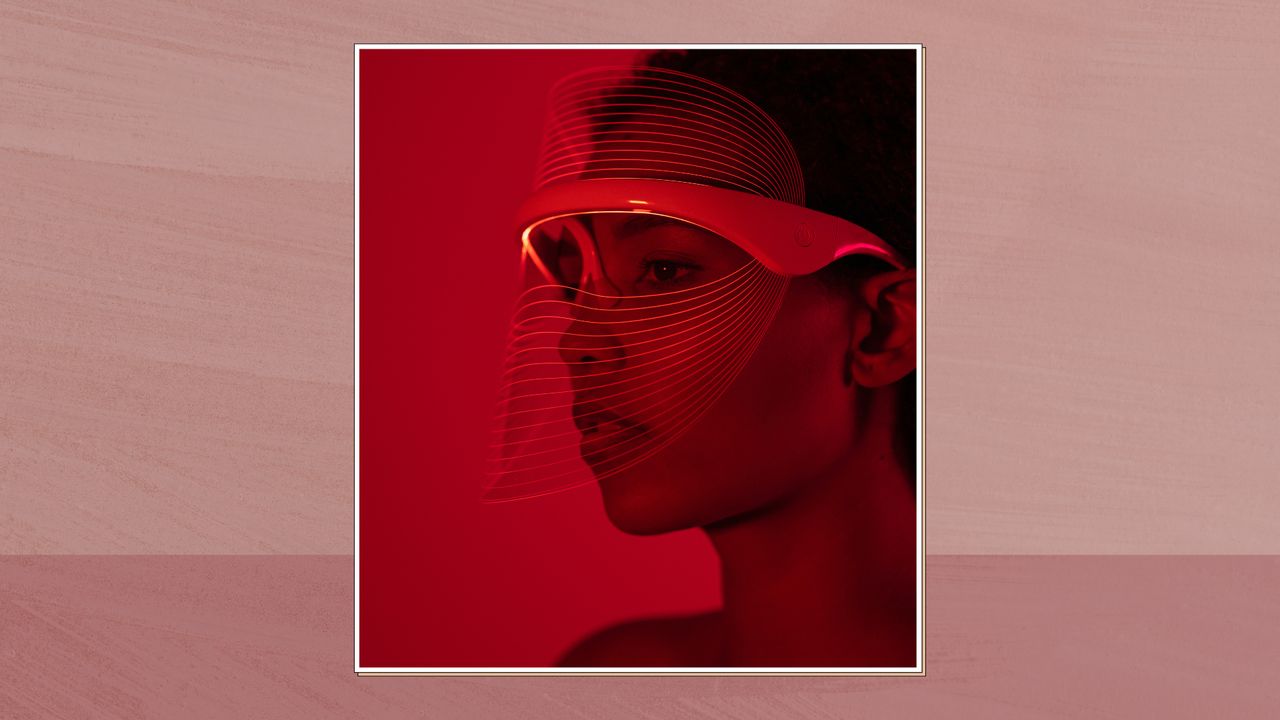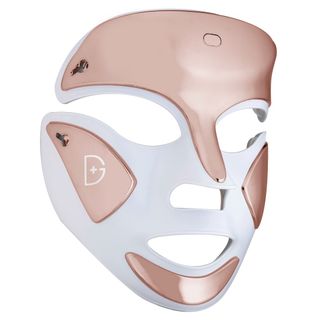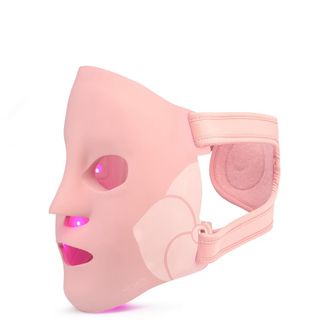Does light therapy for acne work? Experts explain the science as our beauty editor tries it
Our blemish-prone beauty editor tests light therapy for acne with (spoiler alert) truly impressive results. Here's how it works...


I'd heard about light therapy for acne for years before I took the plunge with my own treatment. I couldn’t decide if it seemed space-age and scary, or just a bit nonsensical. Really, how much difference can light make to one's skin? Well, to cut to the chase, I’m kicking myself for not trying it sooner.
Even the best red light therapy devices may not be the simplest thing to slip into a skincare routine, but when it comes to skincare routines for acne, it’s likely you’ve tried everything else to keep the spots at bay. Swapping your best cleanser? Endless iterations of spot treatments? Painful at home chemical peels? I’ve done them all. I had basically resigned myself to always having some form of acne, and decided to be grateful that it wasn’t worse. I was quite content to load up on the best drugstore concealers and be done with it.
Then, in a true rom com meet-cute moment for my skin, one day everything changed. At the risk of sounding smug (or tempting fate), my skin has never looked better. My Instagram DMs have been wild with questions about the improvement to my complexion and, although it's far from the cheapest fix, it is an incredibly simple answer. It's all down to light therapy.
Light therapy for acne: Our beauty editor investigates
What is light therapy?
I’ve had a few LED treatments at the end of posh facials and have always enjoyed them, but couldn’t really pinpoint any difference it made to my skin – it was hard to differentiate what the light had done as opposed to all the other steps like massage, serums and peels. The whole thing made me shrug, if I’m being completely honest.
Then I visited pro facialist to the stars, Shane Cooper, who transforms the faces of A-listers like Sienna Miller, Phoebe Dynevor and Hannah Waddingham. I knew I was in safe hands – I practically dove onto his treatment bed from the door – but it was when we started talking about light therapy for acne that everything started to click.
"Light therapy is great for boosting collagen and inducing elastin regeneration in the dermis layer of the skin," Cooper explains. "I use Dermalux LED light therapy; it’s fantastic and has different settings so you can use it for psoriasis, pigmentation, redness, as well as acne, so you can completely tailor it to each person.”
More specifically, "Blue LED light therapy is fantastic for acne-prone skin as it helps kill the bacteria within the skin and balance excess oiliness," he continues. "I always combine blue and red together to stimulate hydration within the skin. The red LED light stimulates collagen which is great for helping to heal acne scars." In other words, light therapy for acne is often very effective.
Sign up for the woman&home newsletter
Sign up to our free daily email for the latest royal and entertainment news, interesting opinion, expert advice on styling and beauty trends, and no-nonsense guides to the health and wellness questions you want answered.
How does light therapy for acne work?
Time for the science bit. I spoke to Dr Dennis Gross, a dermatologist and dermatological surgeon who knows a lot about light therapy. “Our cells have receptors for LED exactly like they do for other active ingredients, like retinol," he explains. "Just as traditional ingredients connect to receptors and stimulate collagen production, LED is a catalyst for stimulating our skin’s own natural collagen production and reducing inflammation.”
Gross is a real advocate for the benefits of light therapy for acne. “There are no downsides to incorporating LED into your routine!" he enthuses. "An FDA-cleared LED device is safe to use at home and offers immediate and long-term benefits. With at-home LED devices, the goal is to build collagen every day which is why you should incorporate it into your daily skincare regimen.”
The various colours of LED lights each have a different use:
- Red light: Sends signals to skin cells to stimulate collagen production, while also calming inflammation.
- Blue light: A germ-killer, it connects to acne-causing bacteria and causes it to implode and vanish.
- Purple light: A combination of both, which will do all of the above.
Our beauty editor's experience of at-home LED light therapy
You don’t have to visit a salon to reap the benefits of light therapy for acne-prone skin. If anything, the biggest transformation in my skin happened when using an LED device at home, while working on a Dr Dennis Gross DRx SpectraLite FaceWare Pro review. By the end of the first week of use, my face looked brighter and clearer, and my acne scars had begun to fade. Two months in and it still keeps getting better.

Senior beauty editor Rhiannon Derbyshire shows her clear skin, both without and with makeup, after regular LED mask use
As with most skincare products, consistency is the key to seeing results. So the occasional light therapy treatment at a salon is great, but forking out £80 a pop for regular sessions isn't viable for most people. Investing in an at-home LED mask could be the answer to the question of how to get rid of acne, especially if you commit to using it daily.
What seems like a huge financial investment to begin with (I'll readily admit that I winced at the price of mine) does start to make more sense when you break it down. Spending money on the best skincare devices makes more sense than spending hundreds on luxe face cream. Creams, serums and lotions are single-use, and expire, whereas you can use devices over and over for years. You could also split the cost with a friend or somebody you lived with and share it if that would work better for you.

RRP: £430
This gadget was my skincare secret weapon over the last few months ahead of writing this guide. It is, without a doubt, the product that's had the biggest impact on the clarity and brightness of my skin. My favorite thing about it is that it takes just three minutes to work, so you can pop it on quickly in a TV ad break and, voilà – you're done. It's the best light therapy for acne treatment I've tried.

RRP: £750
Rated highly in our guide to the best red light therapy devices, this MZ Skin tool is a serious investment, we won't pretend otherwise. Crafted from soft, medical-grade silicone, it moulds to the contours of your face for a snug fit. Specifically as a light therapy for acne, its treatment mode of the same name combines red and blue light to help treat blemish-prone skin (there's also a red light-only mode).
Light therapy for acne: Our beauty editor's verdict
I truly believe that the best thing I have ever done for my skin was using an LED treatment mask every day. What started out as a cautious, borderline pessimistic investigation turned into a game-changing, non-negotiable part of my skincare regime. Truly, it’s the best skincare device I've tested – if not one of the best skincare products I've ever used.
I alternate between the red and blue light settings on my mask and occasionally use a combination of both when I want to change things up. My skin is bright, clear and I haven't had any acne for weeks (not even one spot!). I can't overestimate how incredible that is, as my skin hasn't been this flawless since I was a toddler.
If you're thinking about trying light therapy for acne, you won't be disappointed. Not only will it help reduce blemishes, but in my experience your skin will also look brighter, smoother and radiant. You can thank me later.

Rhiannon Derbyshire is the Senior Beauty Editor for Woman & Home.
She started interning for glossy magazines in 2011 while working alongside her Fashion Journalism degree. There, she was lured to the beauty desk, seduced by red lipsticks, posh shampoos, and every skincare product imaginable. 10+ years into her career, she now writes about all things skincare, haircare and makeup for six national titles and interviews celebrities, experts and brand founders. She oversees and judges products for the Woman & Home skin, hair and beauty awards, testing hundreds of products yearly.
With 3A curls, Rhiannon specialises in writing about curly hair routines and has a penchant for red lipsticks and minimalist skincare routines - with a bit of LED therapy thrown in.
-
 Dr Hilary Jones reveals the two 'ideal' exercises for losing weight and keeping it off for good
Dr Hilary Jones reveals the two 'ideal' exercises for losing weight and keeping it off for goodThe doctor appeared on Lorraine to share his tips on how to burn more calories in the gym, outdoors or at home
By Grace Walsh Published
-
 Denise Lewis’ sultry take on the lace trend has convinced us to give it a go at our next special event
Denise Lewis’ sultry take on the lace trend has convinced us to give it a go at our next special eventDame Denise Lewis wore a sensational lace pencil dress to the 2025 MOBO Awards and it's a sophisticated way to wear this trend
By Emma Shacklock Published